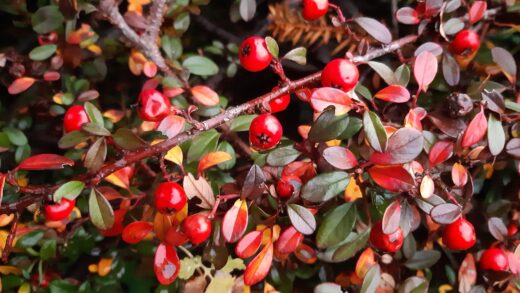The American Tulip Tree, or Liriodendron tulipifera by its botanical name, is a truly impressive ornamental tree native to eastern North America. Its characteristic tulip-like flowers and uniquely shaped, four-lobed leaves give it an unparalleled aesthetic value, making it a distinguished ornament for any garden or park. Its dimensions are imposing, as it can reach a height of up to 60 meters in its native land, though in Europe it typically grows to 25-35 meters. Its crown is conical in its youth, eventually developing a broad, oval shape that provides pleasant shade in the summer heat.
The tree’s bark is smooth and gray when young, but later becomes deeply furrowed, which further enhances its rustic appearance. In the spring, usually in late May or early June, it produces its special, greenish-yellow flowers, adorned with orange spots. Although the flowers are located high in the foliage and are not always conspicuous, upon closer inspection, they prove to be a true wonder of nature. The cone-like fruit clusters that develop after flowering mature in the autumn and can remain on the tree even during the winter months, providing food for birds.
Its leaves are also remarkable, as their shape is almost incomparable to any other tree species. The characteristic leaves with their truncated tips, divided into four lobes, shine in a fresh green color in the summer, and in the autumn, they take on a golden-yellow or even orange hue, creating a magnificent splash of color in the garden. This autumn foliage color is one of its main attractions, which is why many choose this tree species as a solitary specimen, planted alone, so that its full beauty can be appreciated. The size of the leaves is also considerable, as they can reach a width of 15-20 centimeters.
In summary, the American Tulip Tree is a fast-growing, long-lived, and relatively low-maintenance tree that, under the right conditions, can be the pride of the garden for decades. However, it is important to be aware of its space requirements and environmental expectations before deciding to plant it. Due to its impressive size, it is primarily recommended for larger gardens, parks, or even tree-lined avenues, where there is sufficient space for its development and the expansion of its root system. With proper planning and care, we can cultivate a tree that will provide aesthetic pleasure for generations.
Choosing the Ideal Planting Location
For successful cultivation, the American Tulip Tree requires careful selection of the planting site, the basis of which is providing the right type of soil. The tree prefers deep, well-drained, nutrient-rich soils with a slightly acidic to neutral pH. It thrives particularly well in loose, humus-rich loam soils, where its root system can easily spread and penetrate deeply. Overly compacted, clayey, or extremely dry, sandy soils should be avoided, as these can inhibit its growth and make it more susceptible to diseases.
More articles on this topic
Light conditions are also crucial for the healthy development of the tulip tree. This tree species is distinctly light-demanding, so we must choose a sunny or, at most, a lightly semi-shady location for it. In full sun, its crown develops most beautifully, and its flowering will also be more abundant; additionally, its autumn foliage color will become more intense. In shady places, the tree may become leggy, sparse, and develop a less attractive crown shape, so avoid planting it in the shade of buildings or other large trees.
When choosing the planting location, the final size of the tree must also be considered, as the crown diameter of a mature specimen can reach 10-15 meters. Ensure that the tree is planted at least 8-10 meters away from buildings, overhead power lines, and the neighboring property line to avoid future problems. Ensuring adequate space not only serves the aesthetic development of the tree but also allows for the unimpeded expansion of its root system, thus preventing potential damage to foundations or sidewalks.
Finally, the climate is also a decisive factor, although the American Tulip Tree adapts relatively well to local climatic conditions. Young specimens can be frost-sensitive in the first few years, so it is worthwhile to provide winter protection, for example, by wrapping the trunk. Late spring frosts can damage the newly emerged leaves, but the tree usually recovers from this quickly. Hot, dry summers can take a toll on it, especially younger individuals, so regular watering is essential for their proper development during such periods.
The Planting Process Step-by-Step
The ideal time to plant the American Tulip Tree is in the spring, after the frosts have passed, or in the autumn, in the period after leaf fall but still frost-free. The advantage of spring planting is that the tree has an entire growing season to establish its roots, whereas during autumn planting, the soil moisture and cooler weather aid in root establishment. Container-grown plants can be planted almost all year round, except on the hottest summer days and during the freezing winter period. However, bare-root specimens must be planted during the dormant period, i.e., late autumn or early spring.
More articles on this topic
The preparation of the planting hole is one of the most important steps for a successful planting, which determines the future development of the tree. The size of the hole should be at least twice, but preferably three times, the diameter and depth of the root ball. This spacious hole ensures that the roots are placed in loose, tilled soil, which facilitates their expansion. It is advisable to improve the excavated soil with mature compost or organic manure so that the tree receives enough nutrients from the very beginning, which will stimulate its growth.
Placing the tree in the hole also requires precision to ensure the correct planting depth. The top of the root ball should be level with the surrounding ground or one to two centimeters higher. Planting too deep can lead to root collar rot and the death of the tree, while planting too high can cause the roots to dry out. After placing the tree in the center of the hole, gradually backfill it with the improved soil mixture, gently tamping the soil to avoid air pockets.
After planting, thorough watering is essential, which helps the soil to settle around the roots and removes any remaining air pockets. For this purpose, use at least 20-30 liters of water, which should be applied slowly and in several portions. In the weeks and months after planting, especially during dry periods, regularly check the soil moisture and water as needed. A watering basin formed around the trunk of the tree helps to retain water, and mulching the soil (e.g., with pine bark) reduces evaporation and inhibits weed growth.
Propagation by Seed
Propagating the American Tulip Tree from seed is a lengthy but extremely rewarding process that requires patience and attention. The seeds can be collected in the autumn, after the cone-like fruit clusters have turned brown, before they fall from the tree and are scattered by the wind. Carefully extract the winged seeds from the fruit, then soak them for a day in lukewarm water to dissolve some of the germination-inhibiting substances. Remove the empty seeds floating on the surface of the water, as they are most likely not viable.
The seeds of the tulip tree have a deep dormancy that can only be broken by a cold treatment, i.e., stratification. For stratification, mix the moist seeds with clean, slightly damp sand or perlite, then place the mixture in a resealable plastic bag or box. Store this package in the refrigerator, at a temperature between 1 and 5 degrees Celsius, for at least 60-90 days, but even up to 120 days. It is important that the medium remains constantly moist, but not too wet, as this would lead to seed rot.
After the cold treatment period is over, in early spring, sow the seeds outdoors in a well-prepared seedbed, or in pots with loose, well-draining seedling soil. Sow the seeds about 1-1.5 centimeters deep, then gently cover them with soil and water carefully. Germination usually takes from a few weeks to several months, so be patient and keep the soil constantly slightly moist. Place the pots in a bright, but from direct midday sun protected place, so that the young seedlings do not get scorched.
The care of the germinated seedlings requires special attention in the initial stage for successful further development. Provide them with enough light and regular, but not excessive, watering, avoiding standing water. It is advisable to grow the young plants in a pot for the first year and to transplant them to their final location only the following spring, when they have strengthened. Before transplanting them, gradually acclimatize them to the outdoor conditions to avoid the shock that could result from a sudden environmental change.
Vegetative Propagation Methods
In addition to seed, the American Tulip Tree can also be propagated vegetatively, which can yield faster results and guarantees the preservation of the mother plant’s characteristics. One possible method is softwood cuttings, which can be done in early summer with cuttings taken from fresh but already semi-hardwood shoots. Cut 10-15 centimeter long shoot tips, remove the lower leaves, and cut the upper ones in half to reduce transpiration. Dip the base of the cuttings in rooting hormone, then stick them in a loose, moist medium, for example, a mixture of perlite and peat.
Hardwood cuttings are another option, which can be done during the dormant season, in late autumn or winter, from one-year-old, fully matured branches. The cuttings should be about 20-30 centimeters long, and pay attention to the polarity, i.e., the correct direction of the buds. The hardwood cuttings can be stored until spring by planting them directly outdoors in a protected bed, or by storing them in moist sand in a cool place. Rooting is a slower process than with softwood cuttings, and the success rate may be lower, but it is worth a try.
Grafting the tulip tree is also a proven propagation technique, primarily used by nurseries for the propagation of noble cultivars, such as those with special leaf shapes or columnar growth. For grafting, a rootstock grown from seed is needed, onto which the noble scion or bud of the desired variety is placed. The most common grafting methods are whip and tongue grafting, which are done in the winter, or bud grafting in the summer. This method requires skill and precision for a successful union.
Layering is a less common but also feasible at-home form of propagation, during which one of the lower, flexible branches of the mother plant is bent to the ground. A part of the branch, the section below the buds, is slightly wounded, secured in the soil with a wire hook, and then covered with soil. The soil-covered part will eventually develop roots while continuing to receive nutrients from the mother plant. Rooting usually takes one to two years, after which the new plant can be separated from the mother plant and transplanted to its final location.
Long-Term Care and Challenges
An already well-established, older American Tulip Tree requires relatively little care and tolerates drier periods well thanks to its deep-penetrating root system. In the first few years, however, until the root system is fully developed, it will be grateful for abundant watering during long droughts. Nutrient supplementation is usually not necessary if the tree has been planted in suitable soil, but slow-growing specimens can receive a dose of a complex, slow-release fertilizer or mature compost in the spring, spread around the trunk.
The issue of pruning in the case of the tulip tree is simple, as the tree naturally develops a beautiful, regular crown, so formative pruning is usually not necessary. The intervention is mostly limited to the removal of dead, diseased, or crossing branches, which should be done during the tree’s dormant period, in late winter or early spring. With formative pruning at a young age, the development of a slender, straight trunk can be aided, but later, drastic pruning should be avoided, as it would lead to the loss of the tree’s natural shape and the formation of water sprouts.
The American Tulip Tree is relatively resistant to diseases and pests, which further increases its appeal among garden enthusiasts. However, sometimes aphids may appear on it, which suck the sap of young shoots and excrete honeydew, which promotes the growth of sooty mold. Occasionally, powdery mildew can also attack the leaves, especially in humid and warm weather, which leads to the formation of a white coating on the leaf surface. However, these problems rarely cause serious damage and can usually be managed by removing the infected parts without chemical intervention.
The biggest challenge in the case of the tulip tree is its size and its space requirements, which must be considered before planting. Due to its rapid growth, it can quickly outgrow smaller gardens, and its expansive crown can shade its surroundings. Its root system is also extensive, although it does not belong to the trees with aggressively spreading roots, but it is essential to maintain an appropriate distance from the foundations of buildings and utilities. The large falling leaves and fruits can create a significant amount of garden waste in the autumn, the disposal of which must be managed.


















